“Cinecittà è una parola magica” Dante Ferretti.
“Cinecittà is a magic word” Dante Ferretti
The film studios of Cinecittà are part of the history of cinema: over 3000 movies have been filmed here, including the colossals Quo Vadis?, Ben Hur and the Dolce Vita. The myth of the “Hollywood on the Tiber” dates back to the 30s when the film studios were part of the propaganda project to promote the fascist ideals of Mussolini.
The size of the Roman studios was impressive for the period: the architect Gino Peressutti was responsible for the construction of the 73 buildings of the complex, including 12 sound stages, editing and printing workshops, an acting school and the headquarters of the Istituto Luce, the “moral authority” of cinema during the fascist regime.
On April 28, 1937 Cinecittà was officially inaugurated: from that moment on it would become the “dream factory” that saw the birth of some of the greatest masterpieces in cinematic history. The end of Fascism was also the end of the glory of Cinecittà. During the Nazi occupation the studies fell into disrepair. In 1943 Cinecittà was sacked and the complex used by the German Reich as a holding center for prisoners.
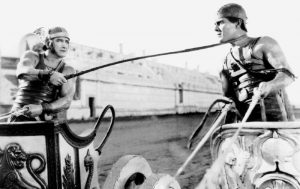 But the star of Cinecittà would soon shine again: in 1947 the Hollywood on the Tiber was chosen by American production companies as the set for masterpieces such as “Ben Hur“, “Quo Vadis?”, “Cleopatra” and “The Fall of the Roman Empire “.
But the star of Cinecittà would soon shine again: in 1947 the Hollywood on the Tiber was chosen by American production companies as the set for masterpieces such as “Ben Hur“, “Quo Vadis?”, “Cleopatra” and “The Fall of the Roman Empire “.
The 1950s was the season of great Italian cinema: this era began with Federico Fellini and his “Dolce Vita”, Rome became the capital of glamor and creativity, a destination for artists and VIPs from all over the world.
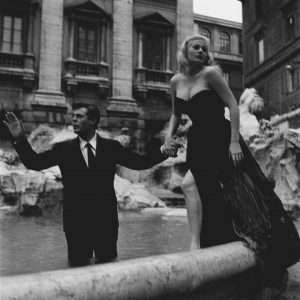 In the following period, between 1970 and 1980, the studios of Rome produced famous films such as “Death in Venice” by Luchino Visconti, “1900” by Bernardo Bertolucci, not to mention Sergio Leone’s spaghetti westerns and the films of Pier Paolo Pasolini. This period also coincided with the Italian cinema crisis: the Americans moved their business elsewhere and Cinecittà lost the income that came with the large international budgets.
In the following period, between 1970 and 1980, the studios of Rome produced famous films such as “Death in Venice” by Luchino Visconti, “1900” by Bernardo Bertolucci, not to mention Sergio Leone’s spaghetti westerns and the films of Pier Paolo Pasolini. This period also coincided with the Italian cinema crisis: the Americans moved their business elsewhere and Cinecittà lost the income that came with the large international budgets.
The digital technology of the 1990s brought the international production companies back with such great films as “The English Patient” by Anthony Minghella and “The Godfather, Part III” by Francis Ford Coppola.
Martin Scorsese was also deeply fascinated by the magic of Cinecittà, so much so he chose it as the location of his 2002 epic period drama, “Gangs of New York”, with Leonardo di Caprio and Daniel Day-Lewis.
Fellini’s Theater 5
 Federico Fellini described Theater 5 as “his home”. The history and fame of Cinecittà is inextricably linked to that of the director who set some of the most beautiful films of his career here.It was here that Marcello Mastroianni interpreted the part of Guido, the director in crisis, in “8½”, and it was here that he in love with Anita Ekberg in “La Dolce Vita“, and it was here, in Cinecittà, that the masterpiece “Amarcord” was filmed.
Federico Fellini described Theater 5 as “his home”. The history and fame of Cinecittà is inextricably linked to that of the director who set some of the most beautiful films of his career here.It was here that Marcello Mastroianni interpreted the part of Guido, the director in crisis, in “8½”, and it was here that he in love with Anita Ekberg in “La Dolce Vita“, and it was here, in Cinecittà, that the masterpiece “Amarcord” was filmed.
Theater 5 was the “home” of all Fellini’s films. If you want to breathe the magic of the cinema of Fellini and his Dolce Vita you cannot miss out on a custom tour to discover the film studios that inspired the great director from Rimini.
The sets
Strolling through the streets of Cinecittà we are transported to new and magical worlds.
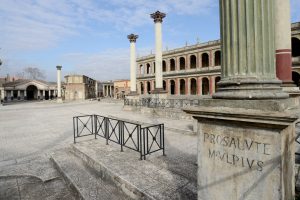 The studios consist of 19 indoor sound stages and several open-air sets to visit. Do you dream of seeing the glories of Ancient Rome up close? Here an impressive set was built which hosted the great international productions of the TV series’ “Rome” and “The Borgias“.
The studios consist of 19 indoor sound stages and several open-air sets to visit. Do you dream of seeing the glories of Ancient Rome up close? Here an impressive set was built which hosted the great international productions of the TV series’ “Rome” and “The Borgias“.
In Cinecittà every set is pure art. Immerse yourself in the evocative atmosphere of fifteenth century Florence, or explore the Temple of Jerusalem used in the film “The Young Messiah”.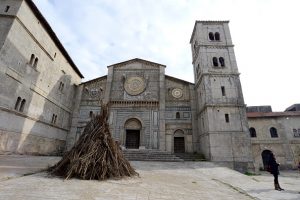
But that’s not all: remember the disreputable streets of “Gangs of New York“? The Oscar winner Dante Ferretti recreated the streets of Lower Broadway, the site of the clash of New York gangs of the 19th century.
The “dream factory” awaits you for an unforgettable journey through the films that have made cinematic history.

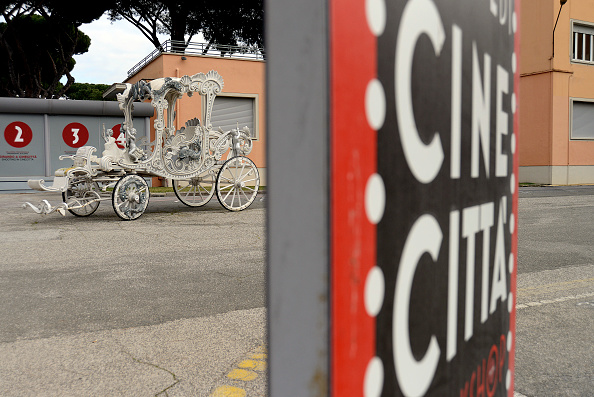
Hello.. we will be in Florence on Monday 7/22 in the afternoon. Are there any tours available as we’ve heard most museums are closed.
We have a party of 9
Thank you!
Hi Jane, visit our website and find out all the Tuscany tours available. Click here https://www.dragonflytours.net/